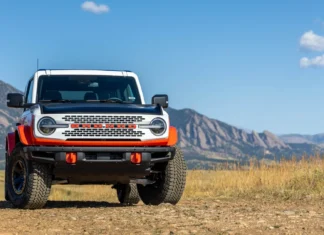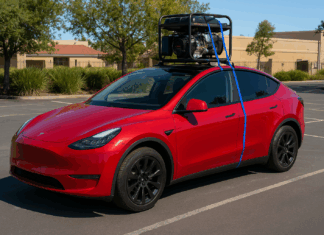
If you’re looking for a new Hyundai, you can shop, order and finance directly through Amazon Autos.
After announcing a strategic partnership at the 2023 LA Auto Show, Hyundai and Amazon have worked out the details for you to shop and purchase a new car directly through the Amazon website right now. This marks the first time Amazon will actually facilitate the sales process for an automaker and its dealer franchisees, and could become a template for others to jump on the bandwagon.
For its part, Hyundai makes the bold claim that this will be how most folks buy cars moving forward. Per Hyundai Motor Company President and CEO José Muñoz: “This collaboration allows customers to conveniently discover, learn about, and purchase their preferred Hyundai model from their local dealer through one of the world’s most trusted shopping experiences. It represents the future of automotive retail and our commitment to redefining how cars are marketed and purchased.”
Prospective buyers will be able to log in through their Amazon account, and shop the available Hyundai inventory at local dealers in their area. The automaker says this program is available in 54 U.S. markets that make up 71% of its normal sales volume, so most people should have access to the Amazon purchase option. Once you find a car, including the trim, options and color you want, you’ll be able to add it to your cart like you would any other Amazon item, and check out. You can also trade in your vehicle toward the purchase of a new Hyundai.
As far as the actual paperwork is concerned, you’ll be able to finance the car through the Amazon Autos website (including placing a down payment), or pay a minimum $500 deposit through Amazon Autos, then work with your local dealer to settle the balance if you prefer to pay for the car in full. Then, you’ll sign all the paperwork online before heading to the dealer to pick up your car, without any haggling or pressure from overcaffeinated sales staff.
There are a few caveats…
While the program aims to take a lot of the stress out of the typical car buying experience, there are a few limitations. Apart from only being able to buy a Hyundai right now, you’ll only be able to look at inventory for dealers who actually sign up to participate. You also can’t kick the tires or book vehicles for a test drive, so you will still have to go to the dealer first if you’re shopping around. Special orders aren’t a thing here, either — you’ll have to pick a vehicle from the available inventory. That said, Hyundai’s Shopper Assurance program is still on the table, so you can swap out for another new Hyundai within three days of your purchase.
Finally, and this is more of a personal caveat — much like your other shopping habits, Amazon does collect and store your car shopping data. While you’ll work out the finer details (including the actual contract) with your dealer, you’d still have to be comfortable, or at least tolerate, giving Amazon your information to facilitate the “convenient” process.
Hyundai’s partnership with Amazon isn’t just stopping at the sales experience. Hyundai’s vehicles will receive Amazon Alexa capability (again, with all the data collection and privacy caveats that carries with it) in 2025. The company is also using Amazon Web Services (AWS) as its cloud computing provider for all of its business operations, including its own manufacturing and supply chain logistics, as well as its “connected vehicle” development.





























































